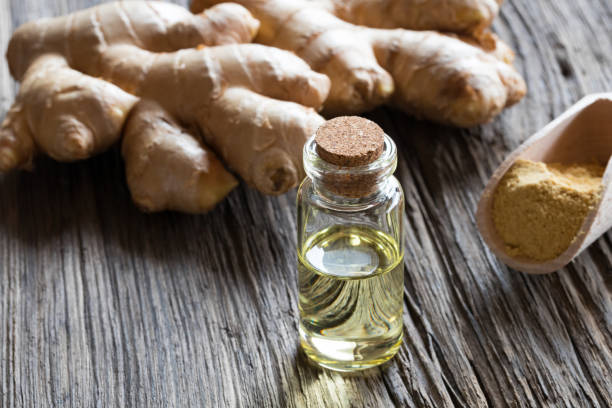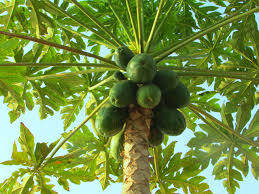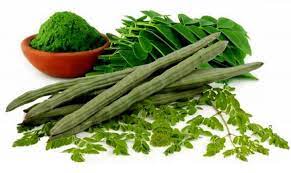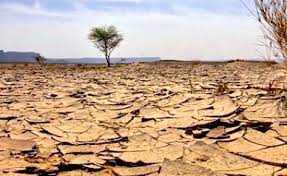
Ginger is an underground rhizome of a tropical plant belonging to the family of Zingiberaceae. It has a pungent and sweet-spicy aroma with a firm, striated texture that adds a unique flavor to different fruit and vegetable dishes.
Its oleoresin contains various bioactive components, which are utilized to obtain a variety of remarkable pharmacological and physiological benefits. It is consumed both as fresh ginger as well as processed to form dried, preserved, oil, pickled and candied ginger products.
Ginger oil is a kind of concentrated essential oil that is extracted from the ginger rhizome through a distillation process. Ginger oil is light yellow in color with pungent aroma and has thin consistency. It has a warm, strong, and spicy aroma, and it is useful for aromatherapy. Ginger oil is a spicy and warming oil that comforts and stimulates the skin, body, and psyche. Ginger oil has long been used in Ayurvedic medicine to treat emotional issues like anxiety, depression, poor self-confidence, and lack of excitement.
The ginger oil market share is expected to increase to USD 77.2 million from 2021 to 2026, and the market's growth momentum will accelerate at a compound annual growth rate (CAGR) of nine point seventy-seven percent (9.77%).
Increasing demand for ginger oil in the food and beverage industry, coupled with rising awareness regarding health benefits of ginger oil are major factors expected to drive the growth of the global market. The manufacturers of food and beverage industry are using ginger oil in their product to add unique flavor, taste, and aroma.
Rising demand for flavored juices and beverages adding ginger oil in their products is another factor expected to propel growth of the global ginger oil market.
Increasing demand for ginger oil in pharmaceutical industry due to its medicinal properties which helps to relieve muscular pain, cramps, aches, medicines of cough, cold, and flu, is one of the factors expected to augment growth of the target market. Increasing adoption of ginger oil for aromatherapy due to growing preference for natural based and herbal product is among the other factors expected to drive growth of the global market.
By Type
Conventional
Organic
Based on processing technology
Steam Distillation
Cold Pressed
Carbon Dioxide Extraction
Solvent Extraction
Others
By Application
Food and Beverages
Cosmetics
Nigeria is the third largest exporter of ginger in the world after China and India. In the Nigerian market ginger is well known and on high demand even though it is quite expensive.
Most of the dried ginger that are available for international trade are simply sun dried over a few days, but artificial drying is also used in areas lacking a defined dry season to coincide with the harvest.
The rhizomeis dried to between ten and twelve percent (10 and 12%) moisture content. Dried ginger is usually presented in a split or sliced form. Splitting is said to be preferred to slicing, as slicing loses more flavour, but the sliced are easier to grind and this is the predominant form of dried ginger currently in the market.
Nigerian ginger is among the best in the world, with its aroma, pungency and high oil and oleoresin content as distinct features. Ginger production in Nigeria started in 1927.
It is predominantly grown in the northern and middle belt region in Nigeria. Kaduna state is the largest producer of ginger in Nigeria. Other ginger-producingmstates include Nasarawa, Niger, Gombe, Bauchi, Plateau and Benue.
Two (2) major varieties of ginger are grown in Kaduna state, namely yellow ginger (which is more widely grown in Kaduna state), locally known as Tafin Giwa, and black ginger, locally known as Yatsun Biri.
According to sector experts in Nigeria, yellow ginger is highly preferred by the market and it has an expected higher yield per hectare (i.e. about 15 tons per hectare) than black ginger (11 tons per hectare).
Every year, Nigeria averages a production volume of over four hundred thousand (400,000) metric tonnes of ginger across the thirty-six (36) states. In 2017, we had a production volume of about three hundred and forty-nine thousand, eight hundred and ninety-five (349,895) and it was higher in 2016 with five hundred and twenty-two thousand, ninety-six (522,096) metric tonnes. Out of this, ten percent (10%) is locally consumed as fresh ginger while ninety percent (90%) is dried primarily for the export markets.
Globally, Nigeria has the 2nd largest production share of about sixteen percent (16%) after India with a production share of thirty-three point nine percent (33.9%).
In Nigeria, harvesting of ginger starts from October and normally continues until April/May. This largely depends on the market situation as ginger can be left on the ground (not harvested) for two (2) years.
Nigeria has comparative in the cultivation of ginger hence setting up a ginger oil processing plant would enable investors to take full advantage of value chain of the product, create emploment opportunties and earn scare foreign exchange.






















